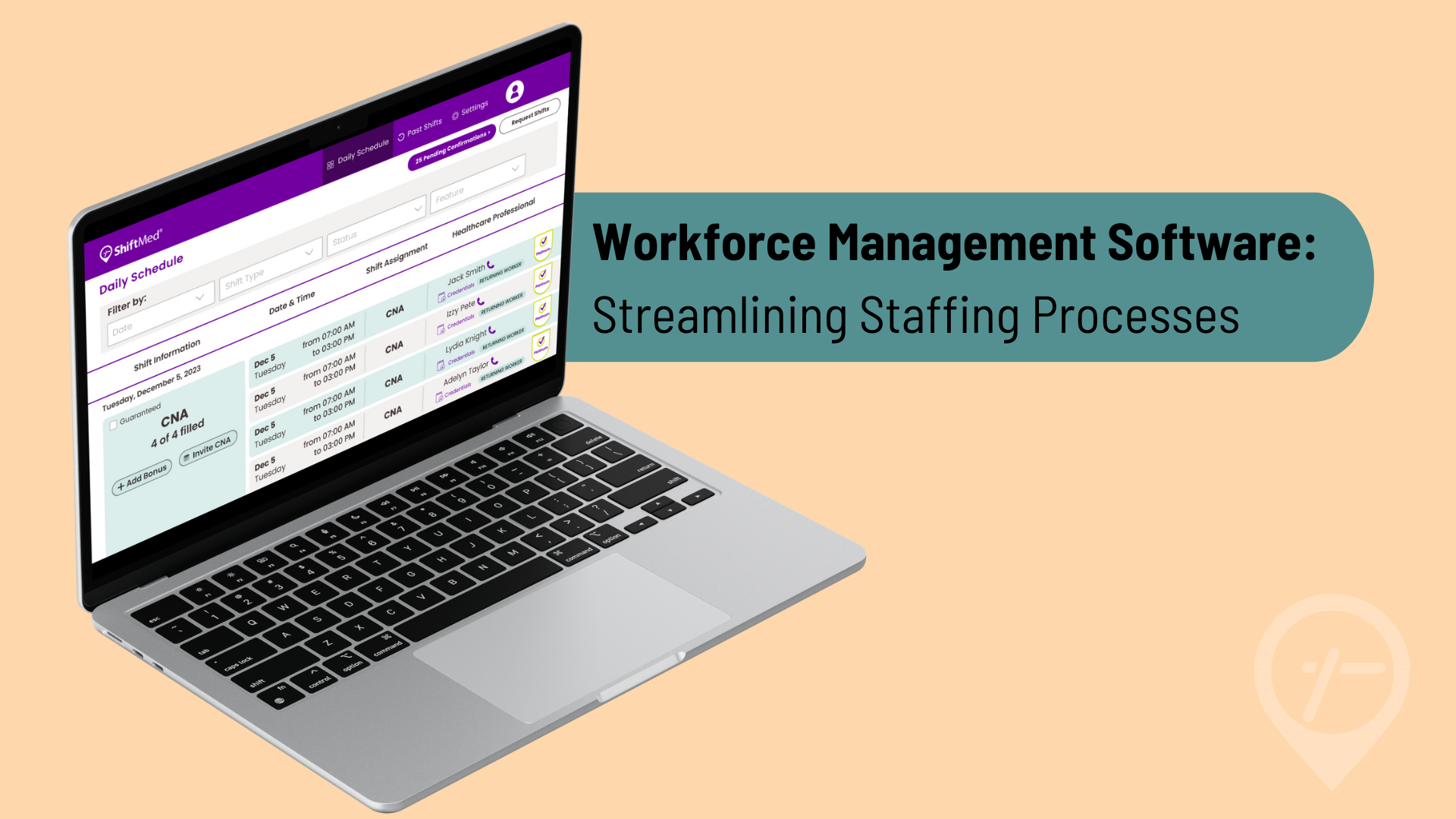Workforce Management Software: Streamlining Staffing Processes for Increased Flexibility

In today’s fast-paced healthcare environment, maintaining optimal staffing levels while ensuring staffing flexibility in healthcare is essential. The healthcare industry, characterized by fluctuating patient demands and varying staffing needs, requires innovative staffing flexibility solutions to manage these complexities. Technology, particularly workforce management software, plays a critical role in providing the necessary tools to streamline staffing processes, enhance efficiency, and offer staffing flexibility strategies.
Workforce management software is designed to automate and optimize various aspects of staffing, from scheduling to real-time monitoring and compliance management. By integrating these functions, healthcare organizations can achieve a more flexible, efficient, and responsive staffing model that meets both patient care needs and employee satisfaction.
Understanding Workforce Management Software
Workforce management software encompasses a range of tools aimed at optimizing workforce scheduling, tracking, and management. It facilitates the coordination of staffing resources to ensure that the right number of qualified staff is available at the right time, minimizing gaps and reducing overstaffing. Implementing staffing flexibility through this software is crucial for healthcare organizations to adapt to changing demands.
Key Features:
Shift Scheduling: Shift scheduling is a core feature of workforce management software. It allows for the creation and management of staff schedules based on availability, skill sets, and patient needs. Advanced scheduling algorithms can predict staffing requirements and adjust schedules dynamically to meet those needs.
Staff Forecasting: Staffing forecasting tools use historical data and predictive analytics to anticipate future staffing needs. This ensures that healthcare organizations can proactively manage staffing levels and avoid last-minute scrambles to cover shifts.
Credential Tracking: Credential tracking ensures that all staff members are qualified and up-to-date with their certifications and licenses. This helps maintain compliance with regulatory requirements and ensures that patients receive care from properly credentialed professionals.
Real-Time Monitoring: Real-time monitoring provides up-to-the-minute insights into staffing levels and patient acuity. This allows for immediate adjustments to be made, ensuring that patient care is not compromised due to staffing shortages or surpluses.
Analytics and Reporting: Analytics and reporting tools provide insights into staffing patterns, overtime, absenteeism, and other metrics. These insights enable better decision-making and strategic planning, improving the efficiency and effectiveness of staffing processes.
Benefits of Workforce Management Software
Enhanced Staffing Flexibility: Workforce management software enhances flexibility by allowing for dynamic adjustments to staffing levels in response to real-time data. This ensures that healthcare organizations can adapt quickly to fluctuations in patient volume and acuity, a core aspect of staffing flexibility models.
Improved Efficiency in Staff Allocation: Efficient staff allocation ensures that the right number of staff members with the appropriate skills are available when needed. This reduces the burden on overworked staff and minimizes the need for costly temporary staffing solutions, highlighting the benefits of staffing flexibility.
Cost Reduction through Optimization: Optimizing staffing levels helps reduce labor costs by minimizing overtime and avoiding the need for temporary staffing. Workforce management software ensures that staff are scheduled efficiently, reducing unnecessary expenses.
Compliance and Credential Management: Ensuring compliance is critical. Workforce management software tracks staff credentials and alerts managers to upcoming expirations, ensuring all staff members are properly certified and compliant with regulations.
Better Decision-Making with Data Insights: Data insights provided by workforce management software enable healthcare organizations to make informed decisions about staffing levels, scheduling practices, and resource allocation.
Nurse Staffing Software Solutions
Staffing flexibility is crucial to maintaining high-quality patient care and staff satisfaction. By leveraging advanced technology solutions, healthcare organizations can optimize their staffing models, ensuring they meet real-time demands efficiently.
Float Pools:
Dynamic Scheduling Algorithms: Float pools utilize dynamic scheduling algorithms to allocate staff across different units based on real-time needs. This allows organizations to deploy staff where they are needed most, improving patient care and staff satisfaction.
Mobile Access for On-the-Go Updates: Mobile access enables staff to receive updates and make adjustments to their schedules on the go. This convenience enhances communication and ensures that staff are always informed about their shifts and any changes.
Per Diem Staffing:
Instant Shift Notifications: Per diem staffing models benefit from instant shift notifications, allowing staff to pick up available shifts quickly. This ensures that staffing gaps are filled promptly, maintaining optimal patient care.
Seamless Integration with Agency Networks: Seamless integration with agency networks allows organizations to access a broader pool of qualified staff. This integration ensures that staffing needs are met efficiently, even during peak times or unexpected shortages.
Contract Staffing:
Automated Contract Management: Automated contract management streamlines the process of managing contract staff, from onboarding to shift scheduling and payroll. This reduces administrative burdens and ensures that contract staff are utilized effectively.
Resource Allocation Algorithms: Resource allocation algorithms optimize the use of contract staff by matching their skills and availability with the needs of the organization. This ensures that contract staff are deployed where they can provide the most value.
Temporary Staffing:
Rapid Onboarding Processes: Rapid onboarding processes ensure that temporary staff are quickly integrated into the organization. This minimizes downtime and ensures that temporary staff can start contributing to patient care immediately.
Performance Tracking and Feedback Loops: Performance tracking and feedback loops provide insights into the effectiveness of temporary staff. This information helps organizations make informed decisions about future staffing needs and improve the quality of care.
Achieve Staffing Flexibility
Workforce management software offers numerous benefits, including enhanced staffing flexibility, improved efficiency, cost reduction, compliance management, and better decision-making. Embracing nurse staffing technology is crucial for achieving staffing flexibility in healthcare. Workforce management software provides the tools needed to adapt to changing needs, optimize resource allocation, and ensure that patient care remains a top priority.
By adopting these solutions, healthcare organizations can improve patient care, reduce costs, and create a more satisfied workforce. Book a workforce consultation today to learn more about the impact ShiftMed’s workforce technology can have on your organization.